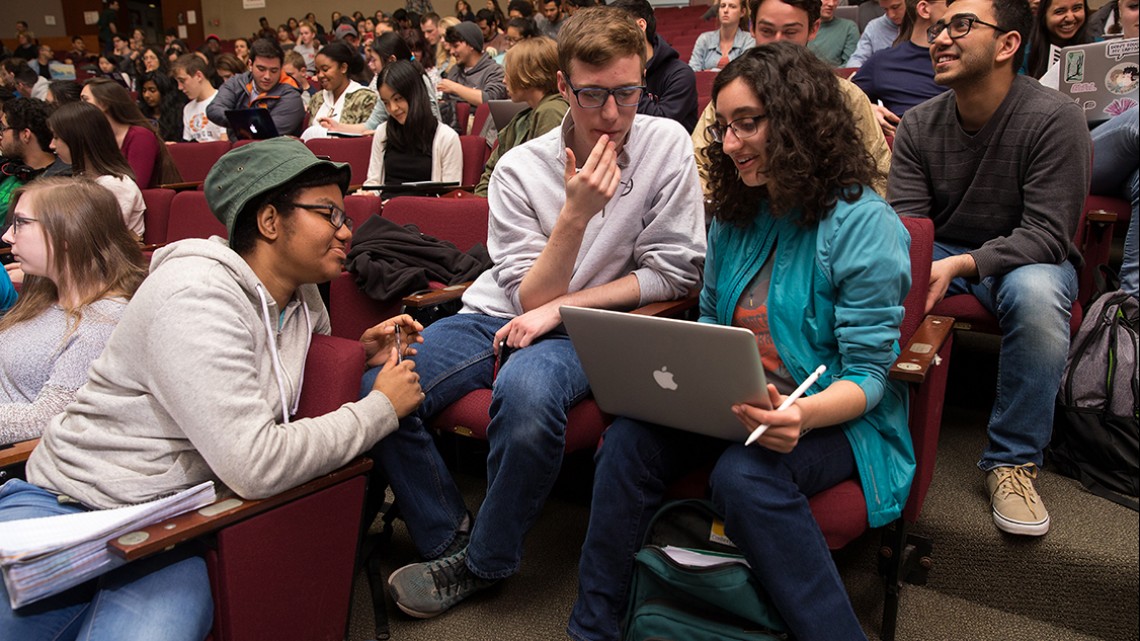
Students in a 2017 Ecology and Evolutionary Biology course.
Study finds key to closing achievement gap in biology education
By Linda B. Glaser
The limited racial and ethnic diversity among people in biology-related careers has long roots, according to a new study.
As undergraduates, underrepresented minority students face challenges on campus and in the classroom, which can discourage them from pursuing science careers. Research has shown that the use of active learning techniques – such as working in groups and participating in classroom discussions – can help close the achievement gap among undergraduates.
Why and how does active learning make a difference? The answer can provide valuable clues to designing science classroom experiences to level the playing field for participants from different backgrounds, and ultimately to bring the talents of a more diverse workforce to bear on conducting science.
A study published this week in the journal CBE-Life Science Education sheds light on classroom success for underrepresented students. Former Cornell postdoctoral associate Cissy Ballen, now at the University of Minnesota, conducted the study with Kelly Zamudio, the Goldwin Smith Professor of Ecology and Evolutionary Biology, and Jeremy Searle, professor of ecology and evolutionary biology; other paper co-authors are Carl Wieman and Shima Salehi of Stanford University.
The researchers knew that active learning boosts performance of underrepresented minority students more than that of other students. They wondered, how and why?
To find out, they compared three traits – academic performance, self-reported confidence in the ability to do science, and sense of social belonging – in Cornell students who were taking an introductory biology course in a traditional lecture setting with those of students taught using active learning. This included pre-lecture assignments and quizzes, emphasis on group learning activities, checks on active in-class engagement and less emphasis on exams in grades.
They then evaluated the performance of students in two groups: those with high representation in science (white not Hispanic and Asian-American) and those traditionally underrepresented (African-American, Latino, Pacific Islander and Native American).
The researchers found that active learning boosted science self-confidence in all students. Among students from groups well-represented in the sciences,, that boost was accompanied by an enhanced sense of social belonging, but not of improved academic performance. With underrepresented minority students, however, it drove the observed improved academic performance, closing the achievement gap between the two groups.
Ballen noted that the findings provide valuable guidance for those designing and developing undergraduate STEM courses.
“Our results show how similar changes in attitudes in different demographic groups can result in quite different impacts on learning and course performance between the groups,” she said. “They indicate active learning helps remove social-psychological barriers that limit achievement among underrepresented minority students.”
In their report, the researchers noted that active learning likely boosts traits like engagement, motivation and interest as well as academic performance, providing more encouragement to continue in science courses and, ultimately, in science careers.
Linda B. Glaser is a writer for the College of Arts and Sciences.
Media Contact
Get Cornell news delivered right to your inbox.
Subscribe